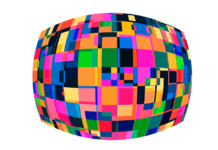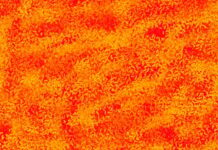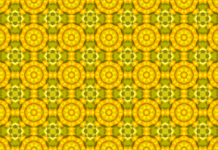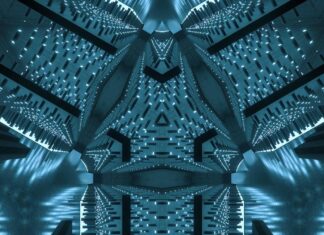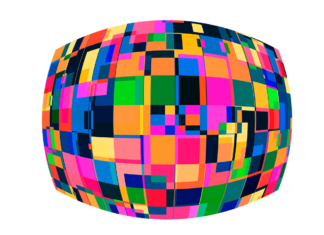Zero-Gravity 3D Printing: Unleashing Innovation Beyond Earth’s Boundaries
In the realm of technological advancements, where creativity and innovation continually push the boundaries of what’s possible, a fascinating process known as zero-gravity 3D printing has emerged as a beacon of transformative potential. This revolutionary technique combines the principles of 3D printing with the unique environment of microgravity, opening up new avenues for manufacturing and fabrication that were once confined to the limits of Earth’s gravity. As humanity ventures further into space exploration and colonization, the capability to create objects with precision and efficiency in a zero-gravity environment holds immense promise for both space missions and terrestrial applications. This article delves into the intricate world of zero-gravity 3D printing, exploring its principles, applications, challenges, and the exciting prospects it presents for the future.
Unveiling Zero-Gravity 3D Printing: A Confluence of Innovation
Zero-gravity 3D printing represents the convergence of two groundbreaking technologies: 3D printing, also known as additive manufacturing, and the weightless conditions found in microgravity environments. Traditional 3D printing involves the layer-by-layer deposition of material to construct three-dimensional objects, allowing for precise customization and minimal waste. This method has already revolutionized industries ranging from aerospace to healthcare by enabling rapid prototyping, customized production, and reduced material consumption.
However, the zero-gravity environment of space introduces a novel dimension to this process. In microgravity, the absence of significant gravitational forces eliminates the need for supporting structures during the printing process. On Earth, gravity can distort the shape of an object being printed, leading to structural weaknesses and limitations in design complexity. In contrast, the microgravity environment of space allows for the creation of intricate and delicate structures that would be unfeasible or highly challenging to produce under the influence of gravity. This unique characteristic has the potential to reshape the landscape of manufacturing, enabling the creation of objects with unprecedented intricacy and functionality.
Applications Beyond Earth: Pioneering Manufacturing in Space
The implications of zero-gravity 3D printing extend far beyond the confines of our planet. As space agencies and private companies set their sights on long-duration space missions and potential colonization of other celestial bodies, the ability to manufacture tools, spare parts, and even habitats in space becomes a critical factor for mission success and sustainability. Traditional methods of sending supplies from Earth to space are not only cost-prohibitive but also logistically challenging. The concept of resupplying missions from local resources through in-situ manufacturing presents a paradigm shift that could dramatically alter the feasibility and longevity of space exploration endeavors.
Zero-gravity 3D printing can revolutionize space missions by enabling on-demand production of essential items. Astronauts on extended missions could fabricate replacement parts for malfunctioning equipment, reducing the need for extensive spare parts storage or costly resupply missions. Moreover, the capability to produce tools and components tailored to the specific needs of a mission could enhance the efficiency and adaptability of space exploration efforts. This is especially crucial when considering the vast distances and communication delays between Earth and remote space destinations.
Challenges and Considerations: Navigating the Zero-Gravity Printing Landscape
While the potential of zero-gravity 3D printing is undeniably promising, there are several formidable challenges that must be addressed before its widespread adoption becomes a reality. One of the primary hurdles is the adaptation of existing 3D printing technologies to function effectively in a microgravity environment. Traditional 3D printers rely on gravity to ensure proper layer adhesion and material deposition. In the absence of gravity, alternative mechanisms must be developed to achieve consistent and accurate printing results. Researchers and engineers are exploring various methods, such as using controlled airflows or localized heating, to guide the deposition of materials in microgravity.
Additionally, material science plays a crucial role in determining the viability of zero-gravity 3D printing. The properties of materials can behave differently in microgravity compared to Earth’s environment, impacting their flow characteristics, cooling rates, and overall print quality. Selecting or designing materials that are well-suited for the unique conditions of space is essential to achieving reliable and robust printing processes. This requires a deep understanding of material behavior in microgravity and the development of innovative formulations to ensure successful printing outcomes.
Future Horizons: From Space Exploration to Everyday Applications
As research and development efforts in zero-gravity 3D printing continue to progress, the potential applications of this technology are not limited to space missions alone. The insights gained from perfecting printing processes in microgravity can be applied to terrestrial industries, unlocking new possibilities for advanced manufacturing. The delicate and intricate structures achievable in zero gravity could find applications in industries such as aerospace, where lightweight yet robust components are highly sought after.
Furthermore, zero-gravity 3D printing has the potential to revolutionize medical technologies by enabling the fabrication of intricate and patient-specific implants and prosthetics. The precision afforded by this technique could lead to enhanced medical treatments and improved patient outcomes. Similarly, industries such as architecture and design could leverage the freedom from gravitational constraints to create novel structures and artistic installations that push the boundaries of imagination and engineering.
Zero-gravity 3D printing stands at the crossroads of innovation, where the limitless potential of human creativity converges with the unique conditions of space. This technological advancement not only holds the key to reshaping space exploration but also has the power to transform industries and open up avenues for groundbreaking applications on Earth. As researchers, engineers, and visionaries continue to overcome challenges and refine the processes involved, the future of zero-gravity 3D printing appears increasingly promising. In the coming years, this transformative technology could redefine the possibilities of manufacturing, design, and human exploration, propelling humanity into a new era of discovery and achievement.
The Intricacies of Zero-Gravity 3D Printing: A Journey Beyond the Boundaries
In the realm of cutting-edge technologies, where scientific exploration dances with innovation, one revolutionary process is poised to redefine the very essence of manufacturing and fabrication. This process, known as zero-gravity 3D printing, represents a nexus of human ingenuity and the peculiar conditions of microgravity. It is a glimpse into a future where objects of remarkable intricacy and utility can be produced in the most challenging of environments. As humanity’s fascination with space exploration and colonization intensifies, the concept of producing objects with precision and efficiency in a zero-gravity setting offers a tantalizing glimpse into what lies beyond the horizons of conventional manufacturing techniques.
The foundation of zero-gravity 3D printing lies in the symbiotic relationship between two groundbreaking technologies: the innovative realm of 3D printing, also referred to as additive manufacturing, and the surreal environment of microgravity that prevails beyond the bounds of Earth’s atmosphere. At its core, traditional 3D printing is a process of additive creation, building layer upon layer of material to form intricate three-dimensional structures. This method has already left an indelible mark on industries spanning aerospace to medicine, revolutionizing prototyping, personalized production, and resource efficiency.
However, it is the absence of Earth’s gravitational pull that imbues zero-gravity 3D printing with its transformative potential. The gravitational forces that govern our planet can wreak havoc on the printing process, causing distortions and weaknesses in the finished product. The beauty of microgravity lies in its neutrality—it doesn’t impose the limitations that gravity does. This absence of a dominant force allows for the construction of objects with astonishing complexity, delicate intricacy, and a degree of precision that was once unattainable. The rules of engagement change, paving the way for shapes, designs, and structures that defy conventional manufacturing wisdom.
As we delve further into the possibilities, it becomes clear that zero-gravity 3D printing is more than a scientific curiosity; it is a technological phenomenon with the power to transcend Earth’s limitations and project us into the future of interstellar exploration and habitation. The concept of fabricating tools, spare parts, and even habitats in space is not merely science fiction—it’s an evolving reality that zero-gravity 3D printing is actively shaping. With long-duration space missions and the prospects of colonizing other celestial bodies on the horizon, the ability to manufacture locally in space emerges as an integral component of sustainability and self-sufficiency.
Consider the impact on space missions. The notion of producing vital objects on demand, right where they are needed, revolutionizes the very fabric of exploration. Imagine astronauts aboard extended missions crafting replacements for malfunctioning equipment, thereby circumventing the need for vast stockpiles of spare parts or the logistical challenges of resupply missions. This transformative capability could significantly bolster the efficiency, adaptability, and longevity of space missions, especially in contexts where communication with Earth is hampered by vast distances.
Yet, traversing the path to zero-gravity 3D printing is not without its hurdles. The transmutation of terrestrial 3D printing technologies to function seamlessly in microgravity is an undertaking of immense complexity. Traditional printers rely on gravity’s pull to guarantee proper material deposition and layer adherence. In the weightlessness of space, novel mechanisms must emerge to ensure precise and consistent printing outcomes. Researchers and engineers are laboring to harness controlled airflows, localized heating, and other innovative methods to steer material deposition in the absence of gravity’s guiding hand.
In a symphony of science and creativity, material science occupies a central stage. The interplay between materials and microgravity introduces intriguing variables that could redefine the path of zero-gravity 3D printing. The properties of materials can alter under weightless conditions, impacting their flow patterns, cooling behaviors, and the overall quality of the final product. Selecting or devising materials optimized for space is an imperative step in ensuring the fidelity and resilience of 3D-printed objects. The journey involves not just understanding the nuances of material behavior in microgravity but also pioneering new formulations that ensure successful outcomes.
As the threads of exploration and ingenuity weave together, the tapestry of zero-gravity 3D printing unfolds with promises that extend beyond the reaches of space. The knowledge gained from refining printing processes in microgravity has implications for industries terrestrial in nature. Imagine the aerospace sector employing intricate and lightweight components birthed from the marriage of structural integrity and the absence of gravity-induced constraints.
But the ripples don’t stop there. The nexus of zero-gravity 3D printing and medicine is a tantalizing realm of possibility. Here, the precision attainable through this process could revolutionize medical treatments through the creation of patient-specific implants and prosthetics. Such advancements could herald a new era of enhanced medical care, where personalization and precision are elevated to new heights.
Stepping into the realm of creativity, architecture and design also stand to gain from this innovation. The shackles of gravity are shed, opening doors to the crafting of structures that defy imagination and push the boundaries of artistic expression and engineering prowess. With zero-gravity 3D printing, architects and designers can reshape the very landscapes in which we live and create, introducing novel forms and structures that embody both utility and artistry.
In the grand tapestry of human advancement, zero-gravity 3D printing emerges as a remarkable chapter, poised to transform the trajectory of exploration, innovation, and human potential. The journey is one of perpetual evolution, as researchers and pioneers navigate the complexities of microgravity, materials science, and technological adaptation. As the pieces fall into place, a new era dawns—one where the limits of gravity are transcended, and the stars are no longer a distant dream but a tangible destination.
Zero-Gravity 3D Printing: A Symphony of Innovation Beyond the Stars
In the grand tapestry of human exploration and technological advancement, an extraordinary chapter is unfolding—one that melds the precision of 3D printing with the ethereal realm of zero gravity. This juncture of innovation is reshaping the horizons of manufacturing and design, propelling us into a future where creation knows no bounds, and the boundaries of Earth no longer confine our ingenuity.
At its essence, zero-gravity 3D printing is a dance of science and engineering, orchestrated against the backdrop of the cosmos. It’s a harmony of form and function, where intricacy and complexity flourish in the absence of Earth’s gravitational pull. The artistry of additive manufacturing marries the elegance of microgravity, giving birth to objects of unimagined delicacy and precision.
Imagine the evolution of a pencil mark into a three-dimensional sculpture suspended in the cosmos. The traditional act of drawing a line metamorphoses into a symphony of layers, each intricately woven upon the last. This symphony is the heart of 3D printing, a process that turns digital blueprints into tangible reality. Yet, it is in the realm beyond our planet’s pull that this symphony achieves new crescendos. The constraints of gravity dissipate, leaving behind a blank canvas of limitless potential.
In this new realm, objects are not merely crafted; they are curated. The confluence of scientific endeavor and boundless imagination yields creations that defy gravity’s grasp. Structures of fragile beauty, delicate networks, and functional intricacies emerge—feats unattainable under Earth’s dominion. This is the allure of zero-gravity 3D printing, an artistry that redefines the language of creation.
However, the odyssey to this threshold of possibility is not without its tribulations. The harmonious melody of microgravity and 3D printing faces discordant notes of adaptation. Traditional printers, engineered to harmonize with Earth’s rhythm, must learn to dance in zero gravity’s weightless embrace. The symphony of deposition and adhesion that orchestrates 3D printing must be reimagined, the composition rewritten to suit this new stage. Engineers and visionaries collaborate to devise novel choreographies—subtle airflows, controlled vibrations, and localized heating—to coax materials into the exquisite dance of creation.
Material science, too, composes a fundamental verse in this symphonic journey. The elements that yield our creations can transform their melodies in microgravity. Flow patterns, cooling behaviors, and the very essence of the materials’ song can shift under the absence of gravity’s hand. This prompts the need for new scores, for materials attuned to the celestial rhythm. Scientists and artists combine their expertise to compose materials that resonate with the cosmic ballet, ensuring the printed objects emerge as harmonious masterpieces.
As the symphony of zero-gravity 3D printing swells, its harmonies reverberate beyond the celestial curtain. The echoes of this technological overture resound within industries as diverse as the constellations themselves. The realm of aerospace bears witness to this evolution, as intricate components crafted in the silence of space find their voice in engines that roar against gravity’s pull. Lightweight and resilient, these components are the overture to faster, more efficient travel—songs that bridge the gap between Earth and the stars.
Medicine, too, finds its rhythm in the cadence of zero-gravity 3D printing. The symphony of personalized healthcare reaches new heights as patient-specific implants, prosthetics, and instruments are shaped with unparalleled precision. The harmonious blend of medical science and artistic engineering composes a score of healing, where ailments are addressed with tailored solutions, and lives are transformed by the symphony of recovery.
A journey into the creative cosmos showcases the visionary potential of zero-gravity 3D printing. Architects and designers unfurl their imaginations, crafting structures that defy earthly conventions. The orchestration of zero-gravity and artistic intent carves pathways through the very fabric of our environments. Sculpted by the harmonies of weightlessness, architectural marvels emerge—monuments to human creativity that breach the limits of gravity.
In this grand tapestry of human potential, zero-gravity 3D printing etches a profound chapter. It is a chapter where creativity, engineering, and exploration coalesce—a tale of forging connections between the celestial and the terrestrial. This odyssey is not just a leap into the unknown; it is the culmination of generations of innovation, a symphony that resonates with the dreams of those who dared to envision a world beyond the stars.
The future beckons—a canvas where zero-gravity 3D printing reigns as the brush, painting a tableau of possibility and transformation. The script is still being written, the melodies still evolving, and the chorus of creation still unfolding. With each layer crafted in the void, we inch closer to a future where the boundaries of possibility expand with the vibrancy of the cosmos itself. And so, the symphony continues, reaching crescendos yet unheard, as humanity’s journey beyond the stars dances to the rhythm of zero-gravity 3D printing.






